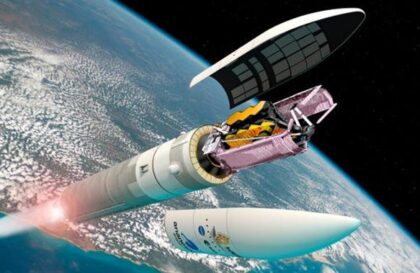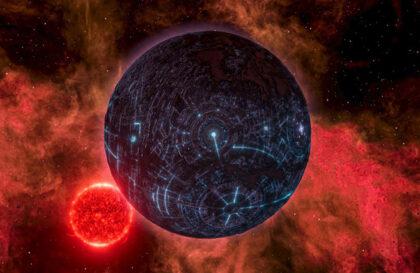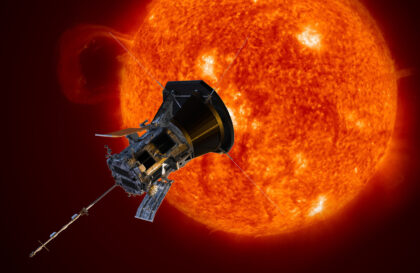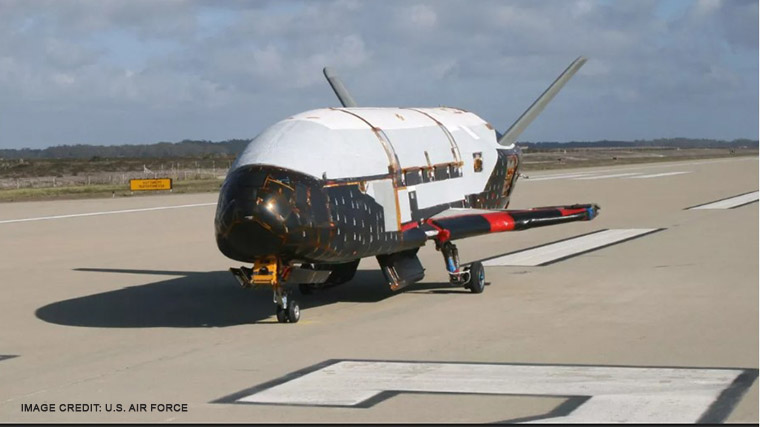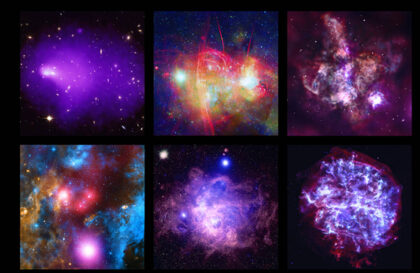In 2018, NASA launched the Parker Solar Probe on an unprecedented mission to study the Sun up close. Mission Goals:
- Track the flow of energy heating the outer atmosphere of the Sun.
- Shed light on the sources of solar wind.
- Study how solar energetic particles, which can travel 93 million miles (150 million kilometers) to Earth in less than an hour, are transported and accelerated.
More than five years have passed since its launch, and Parker Solar Probe continues to break records and take unique measurements of the Sun.
Data
- Solar Probe Plus was the first NASA mission named after a living person, scientist Eugene Parker, who predicted the solar wind. It was renamed Parker Solar Probe in 2017. Eugene Parker lived to be 94 years old when he learned of the probe’s discoveries.
- The Parker Solar Probe, developed at the Johns Hopkins Laboratory in Maryland, was conceived in 1958 and brought to life 60 years later thanks to revolutionary technology. It is equipped with a heat shield, an efficient cooling system, and autonomous devices to maintain its direction towards the Sun.
- The Parker probe set records for the closest flyby of an artificial object to the Sun and the fastest artificial satellite. The speed record is 153,454 mph (246,960 km/h). The record for proximity to the surface of the Sun is 26.55 million miles (42.72 million kilometers). It continues to improve on those numbers, expecting to reach 430,000 mph (690,000 km/h) and get within 3.9 million miles (6.2 million kilometers) of the Sun in 2024.
- The Parker Solar Probe officially sampled the Sun in December 2021. He made the first measurements from inside the star’s atmosphere. He was inside the Sun.
A mission that changed a large-scale paradigm
Parker Solar Probe is equipped with four sets of instruments, and each of them is now credited with several breakthrough studies.
Surface generating solar wind
Credits: NASA/Johns Hopkins APL/Ben Smith
When the Parker probe first entered the sun’s atmosphere, it crossed a boundary known as the Alfvena critical surface, marking the moment when solar matter begins to become the solar wind. This boundary turned out to be not as simple as outlined: instead of a smooth ball, it was indented with depressions and bulges. These features were created for coronal streamers deposited by solar jet material. This discovery changes our understanding of solar weather and the formation of solar wind.
The SWEAP instrument found that the rough edges are caused by coronal streamers, giant streams of solar matter rising into the Sun’s atmosphere. Although streamers have long been observed by spacecraft, they have never been measured directly. These discoveries correct our knowledge of the solar atmosphere and the processes of formation of solar energy.
Dust-free zone
During its journey to the Sun, the Parker Solar Probe finally confirmed the predictions of Henry Norris Russell, finding a dust-free zone he predicted about a hundred years ago. Using WISPR, the probe detected the last small amount of dust at its closest approach to the Sun, consistent with theoretical predictions of sublimation – the disappearance of particles as a result of high heat.
Dust is present everywhere in the solar system. It is the result of collisions of planets, asteroids, comets and other celestial bodies billions of years ago.
The WISPR instrument observed the light reflected from the dust dimming at about 19 solar radii (8.2 million miles or 13.2 million kilometers from the Sun). Models of the results suggest that a dust-free zone should exist at a distance of about 5 solar radii (2.2 million miles or 3.5 million kilometers from the Sun).
Solar magnetic field reversals
The Parker Solar Probe discovered a phenomenon called reversals of the Sun’s magnetic field. The data shows that they glowed in magnetic “funnels” on the solar surface, between structures known as supergranules. These giant bubbles of plasma from the Sun’s interior create a magnetic reconnection that may trigger the solar wind.
Credit: NASA GSFC/CIL/Jonathan North.
Data from the FIELDS instrument helped narrow down the circle of their origin, but the mechanism of formation of reverse turns requires new research.
Integrated Scientific Investigation of the Sun (ISʘIS)
The ISʘIS instrument on Parker Probe is designed to measure solar particles (SEP), high-energy particles that are produced by the Sun. Events caused by these particles, when measured near Earth, are rare and difficult to predict. ISʘIS detects events so small that all traces of them are lost before they reach Earth.
However, thanks to ISʘIS measurements, scientists have discovered a lot of new things about SEP. It turned out that these particles are much more common than previously thought. They also have a wider range of particle types. Another interesting discovery is that the movement of particles is not as linear as previously thought. The paths they travel can be altered by magnetic influences such as reversals, and in some cases the particle path can be twice as long as intended.
These new discoveries are changing our understanding of how solar energetic particles move through space and interact with their environment.
Other achievements
Parker Solar Probe even captured the first images of the surface of Venus in visible wavelengths.
Credits: NASA’s Goddard Space Flight Center/Joy Ng
The mission of extremes continues. Parker’s closest pass to the Sun is in 2024.
Image credit:
https://blogs.nasa.gov
https://www.nasa.gov

